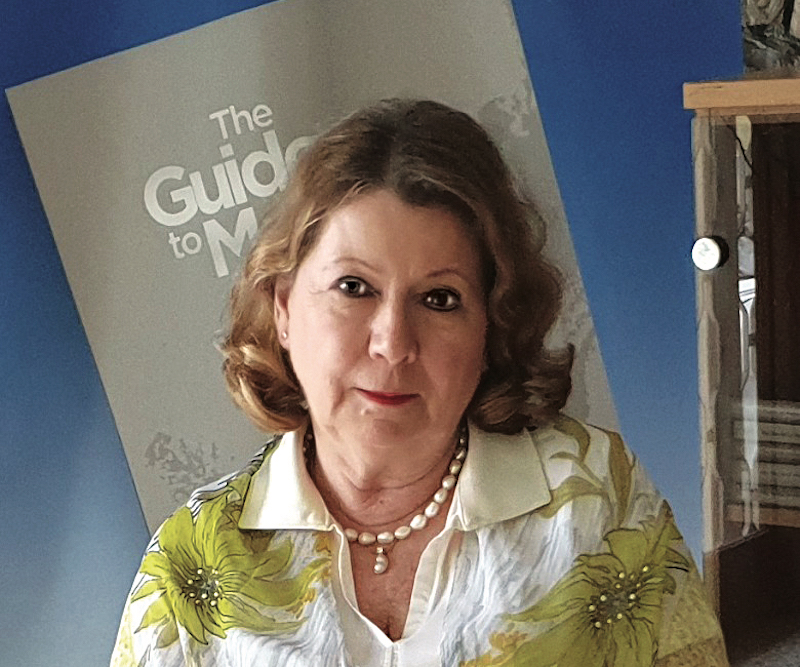
The Guide to Malaysia has information, facts, figures and contact details packaged for the corporate sector (All photos: The Guide to Malaysia)
Three years after releasing The Guide to Malaysia in 2014, Regina Fabiny was set to bring out an updated edition. But unforeseen circumstances have stalled the project until today.
The founder and CEO of Leisure Guide Publishing (LGP) had almost completed work on the 9th edition of the guide in 2018 when the 14th general election was called, followed by the change of government. So she had to revise the text. Twenty-two months later, as the book was ready for print, another new government took over. That meant she had to start all over again.
Last year, the pandemic pushed back her 2020 deadline because the team had to recheck their entries from A to Z to make sure the companies listed were still in operation. Fabiny says she cannot be certain what lies ahead now but hopes to get the book ready by end-June, submit it to the Ministry of Communications and Multimedia for checking, and launch it in August.
Covid-19’s impact on Malaysia is impetus to have the guide out fast because, once borders open again, it is vital that the country gets sharper international focus to boost economic activity. Waiting for others to do the work will put us at the losing end. “Politicians may be busy with other things, but we can work among ourselves to get the message across.”
regina_fabiny.jpg

It is a positive message: “Malaysia is a fantastic country. If you ignore politics, everything else is really good and we must make sure it stays that way.” Publishing a series of comprehensive guides focused on business and leisure activities, presented in an authentic perspective, is one way to do that.
The Guide to Malaysia has information, facts, figures and contact details packaged for the corporate sector. It opens with a brief introduction to each state, then zooms in on the various sectors, from culture, arts and heritage to integrated resorts, food, nature and agriculture, sports, hotels and tourism, technology and innovations, education, property, infrastructure and facilities, local brands and more.
Fabiny says the series has readers in 65 countries and the eighth edition can be accessed free of charge online here.
Internationally, people who want to buy a book about Malaysia can only get tourism guide titles produced by foreign publishers who are fascinated by the ethnic groups and their headgear and costumes and tend to prioritise such information, she notes. On the other hand, there are foreigners who only know about the country through the bad news. Hand them the guide and they will probably be amazed by what we have.
“To successfully compete with other countries, we need a positive country image. What we’re trying to do is give a clearer picture of the benefits of investing in [Malaysia] and doing business here. The guide focuses on the country, its people, achievements, investments and opportunities.”
Companies do not pay to get listed in the guide and, except for the first edition, there are no advertisements. This works out well because she can decide the content, giving equal balance to each state, and choose which facility to feature. “Whoever we find who has a facility where we can safely say we can invite international visitors because the quality is good, will be listed.”
screenshot_2021-06-27_at_10.11.20_am.png

LGP generates income to cover costs by selling the guide to the corporate sector. Companies have the option to design their own cover page to reflect their brand and customise pages to include information relevant to them. These “unique corporate calling cards” make good gifts, she thinks.
German-born Fabiny has been living in Malaysia since 1984. She set up LGP in 1997 following the government’s call to the private sector to help promote the country. A year later, the company released Leisure Guide Malaysia, the third edition of which was published as The Guide to Malaysia in 2003.
LGP also released two state guides, The Guide to Melaka and The Guide to Sarawak, in 2004 and 2015 respectively. Fabiny would like to do more of such titles but says that would require state backing. “It is important to highlight the things in each state because even the local people are not fully aware of their own potential.”
She is working with the various chambers of commerce to get the word out to their members once The Guide to Malaysia is ready. Companies see the need for promotion, and promoting the country is, in essence, positive input for the economy, she reckons.
Everything in the new edition has been updated from 2014. “I must say our arts sector is fantastic, whether it is fine arts or performing arts. The listings have been extended: We have many more museums and places of interest.”
The fashion article is new and the same goes for the information on the environment and aerospace aviation. Global business services and the economic regions get attention, as do health — there are two pages on what the country is doing to fight the coronavirus.
This time around, instead of getting ministers to write the forewords, she has invited industry people from the respective fields to share their expertise.
Fabiny works with a small in-house team in Kuala Lumpur and contributors from around the country. Her main role is to select the features, approach the relevant people to provide the essential information, decide which photos go with what, proofread everything and get every article approved by the respective sources.
The challenge is “to make sure whoever is supposed to be in the book works with us and we cover every section in every sector. Most of the companies we approach are happy to get the exposure. But some do not respond and that is frustrating”.
On the fact that the guide focuses on the established companies, leaving out the bulk of small and medium enterprises, Fabiny says: “The economy has to be strengthened for everyone to have their share. We have 650,000 SMEs in all sorts of production supply chains. If everything stops, nobody benefits.
“It is a big wheel that has to be turned. The main thing is to make sure we talk about Malaysia and put the information out there so investors and tourists will bring their money here. We must have them here and that can only work if we show the country from the best side.”
This article first appeared on June 7, 2021 in The Edge Malaysia.


